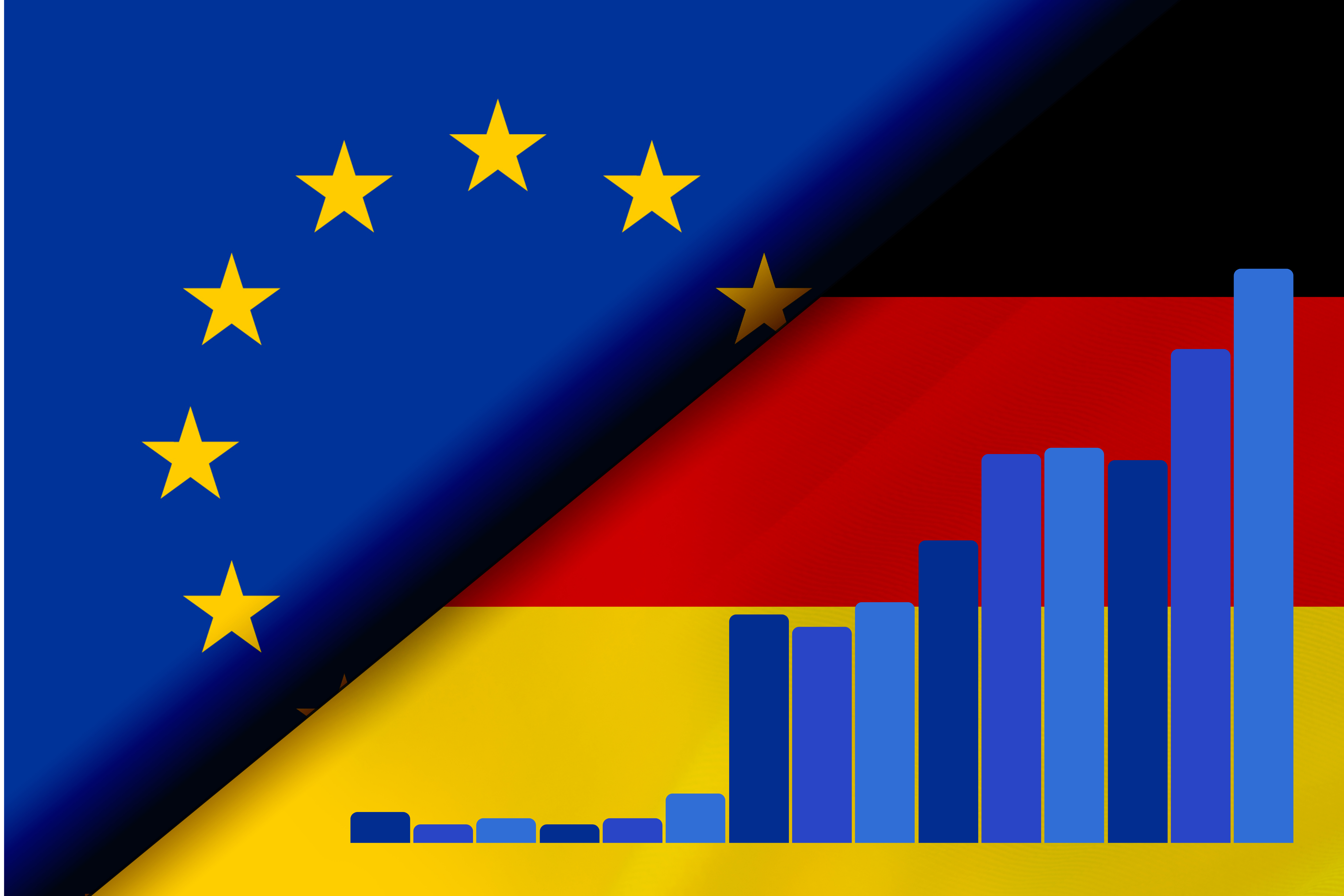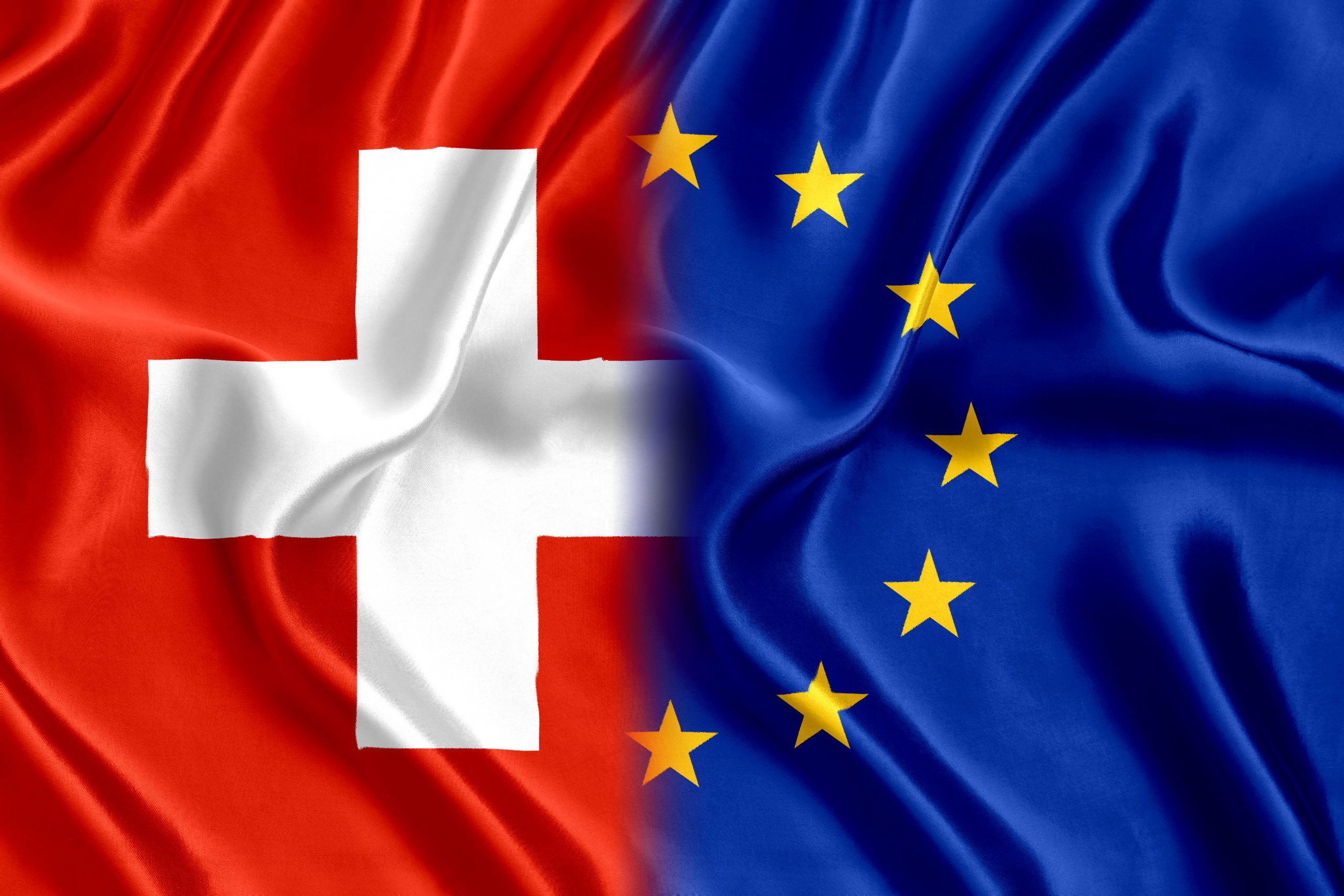In today’s world, where diversity is celebrated and global connectivity is at its peak, translating your website is a strategic necessity that can propel your life science organization towards remarkable international success. In this article, we delve deep into the fusion of website translation and search engine optimization (SEO) to unveil the secrets of creating appealing and result-oriented multilingual content. Drawing on our own experience, we share a case study of a medtech article localized into multiple languages that has consistently stayed in the top search results.
Translation takes your content across linguistic borders, localization ensures it feels at home, and multilingual SEO catapults it into the spotlight to give it maximum visibility. Translated content, localized and optimized for search engines, can reach a wider audience and resonate with it on a deeper level. By using language-specific keywords, meta tags, and other SEO strategies, your content can rank higher, leading to increased traffic to your website and stronger engagement. This trifecta of translation, localization, and SEO can truly amplify the impact of your multilingual content on a global scale. For this reason, website translation efforts should always be approached from an SEO perspective. A well-executed multilingual SEO strategy can shoot your website to the top of Google. This is our success story.
Case Study: How SEO Translation Skyrocketed Our Multilingual Content to Google’s Top #2
Objective: To make our most popular English article more discoverable to medical device professionals in Germany and France
Our journey began with a cornerstone article on the MDR language requirements for medical devices in the EU. Since the inception of our blog over a decade ago, this article has quickly emerged as our most popular piece, boasting an average of 43 daily reads consistently over the past two years. However, statistics showed us that the majority of its readers originated from non-English-speaking countries. At this point it became clear that, to broaden its reach and help more medical device professionals access it, this popular article needed to be available in the languages these professionals typically use for their searches.
Step-by-Step Guide to Top Performing SEO Localization
Step 1: Choose the Language and Conduct a Multilingual Keyword Research
We started by selecting the languages our English content would be localized into. We decided on German and French as these, according to Google Analytics, were the languages of the top two non-English speaking countries where most organic search engine traffic came from.
We used Google Keyword Planner to conduct a thorough keyword research for the topic of our article in German. Based on search volumes, the best performing keyword was ‘sprachlichen Anforderungen der EU MDR’.
Step 2: Create a Query and Analyse Google Results
We used our keyword as a query around which the German version was to be created in NeuronWriter, a platform for multilingual content optimization with semantic SEO. The search engine was set to ‘Google Germany’ and the language to ‘German’.

The analysis this tool performs on the query mimics the way a user searches this information on Google. In essence, it reads the results Google has returned and determines the features of these results. These features form the basis of the recommendations for the content translation. At this stage the tool also allows you to add up to five custom web pages and keywords.
Step 3: Select the Competitors and Content Type
Based on the analysis, the tool showed us a list of top 30 search engine result pages competing for our query ‘sprachlichen Anforderungen der EU MDR’. To get the best recommendations in the editor, we selected the competitors and content type that best matched our original English article.
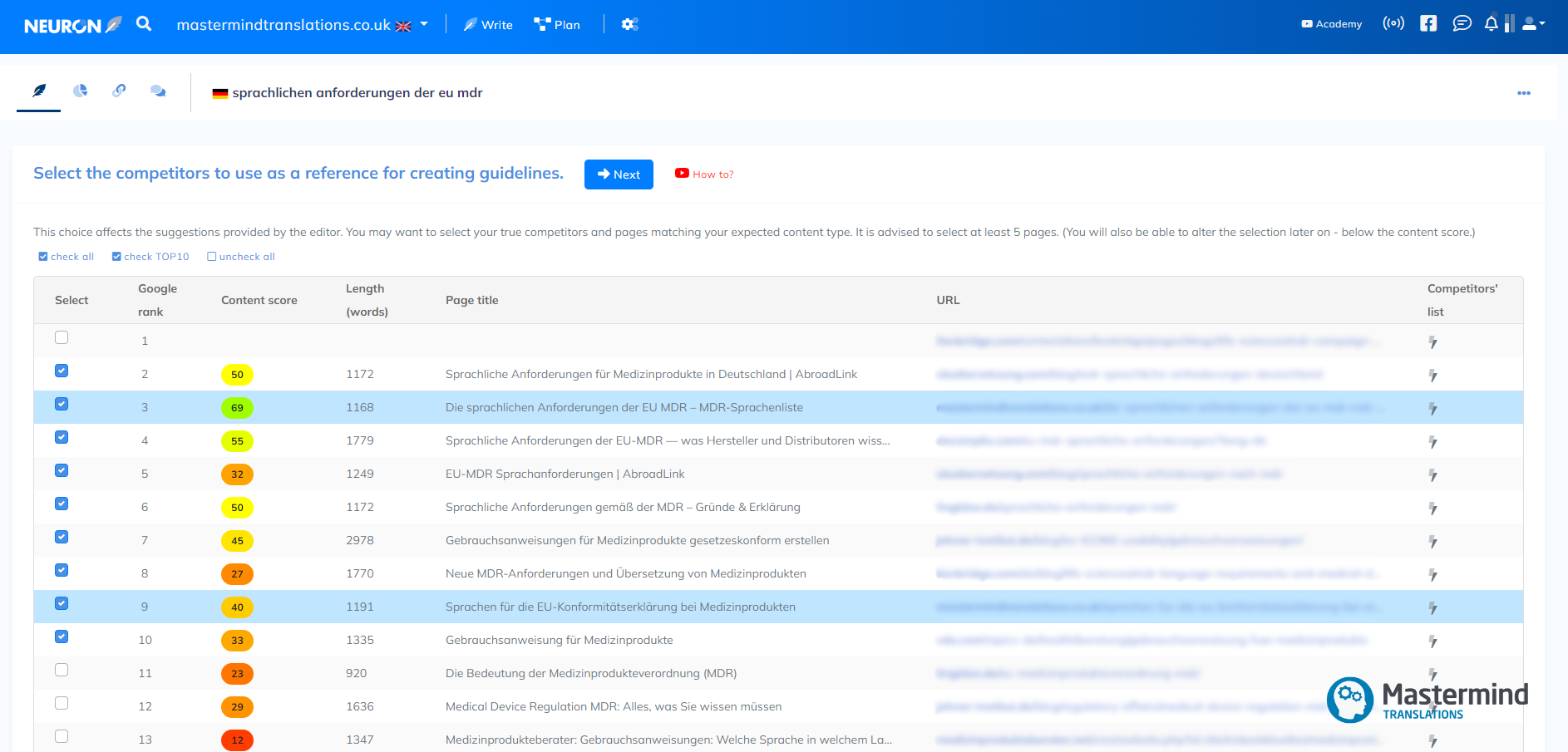
It is worth noting here that the four content types are: commercial, transactional, navigational, and informational. We chose competitors with informational content as this best reflected our preferred search intent.
Step 4: Translate the Meta Title and Description
The SEO titles and descriptions are the most important parts of the page as they are the first two pieces of content a searcher sees. They entice the searcher to click through to your page by setting accurate expectations about its content.
NeuronWriter provides a list of recommended keywords arranged in the order of relevance. Crafting a compelling meta title and description was quite a linguistic challenge for our translator who not only needed to create content for these sections using the most relevant terms, but also to make sure it fitted within the character limit set by Google. This was especially tricky with German which expands as much as 30% when translated from English. This is also one of the many reasons, we suggest creating content from scratch instead of simply translating the original meta title and description. The objective of this crucial step in the localization process is to optimize the content for SEO purposes rather than to provide an exact literal translation.
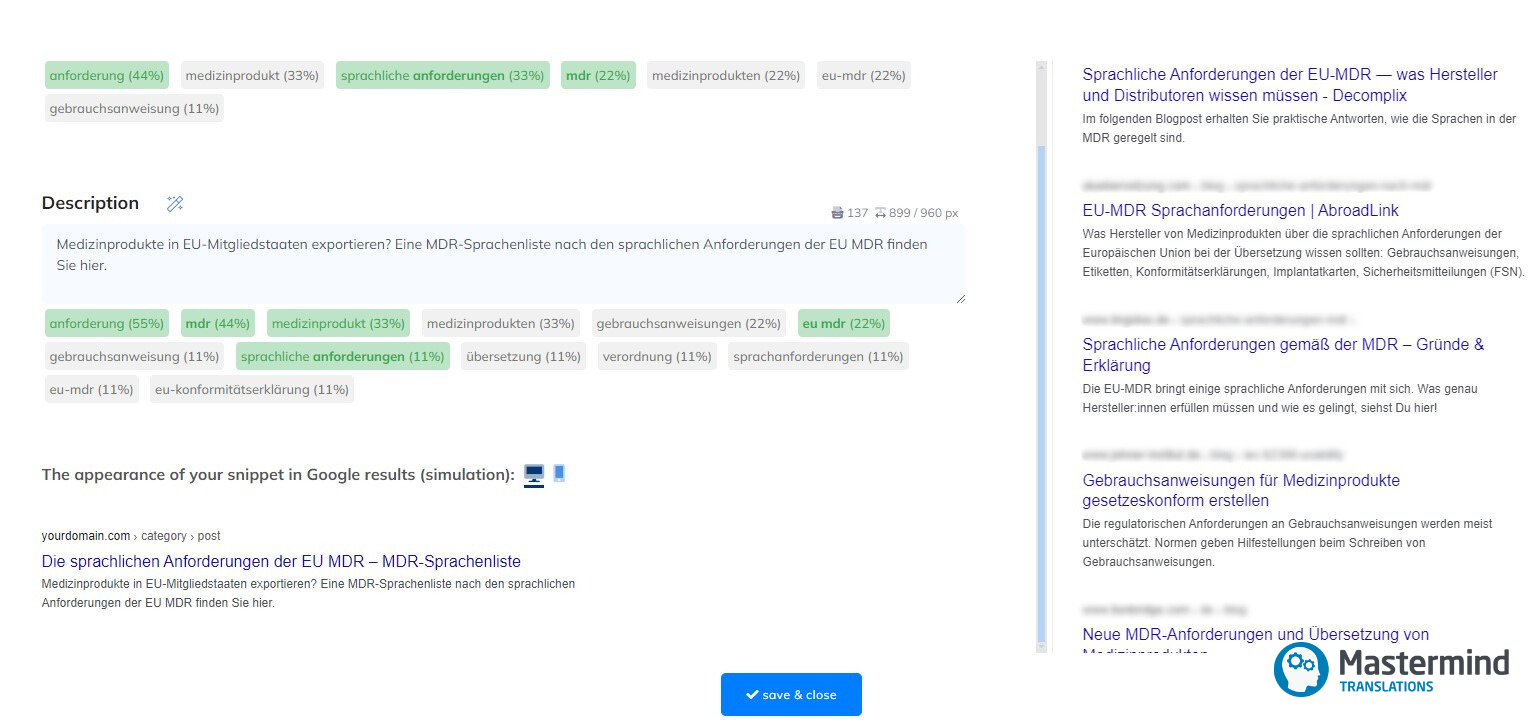
To support your SEO efforts, NeuronWriter has an AI writing feature which can prove extremely helpful with those short but very strategic pieces of content.
Step 5: Translate Content of the Article based on the Suggested Terms
SEO translation differs greatly from the typical translation process. Trying to weave in those SEO keywords seamlessly into the translation while still maintaining the essence of the original content is quite a linguistic challenge. It is a delicate dance of the language and SEO tactics.
NeuronWriter provides a list of recommended terms to use in the headings and the main body of the article. The list also shows how many times each term should be used, which affects the overall content score represented by a colour-coded donut chart.
Our approach was to start with an outline of the German article based on the original English version, but with the headings containing the suggested terms. The use of the recommended terms in the headings as well as in the meta title and description has the biggest impact on your SEO content score. Our SEO translator then proceeded to recreating the content under each heading. During this translation process, the terms recommended for the main body of the article were strategically incorporated into the translated content. Priority was given to ‘basic terms’, which are terms typically associated with the topic of the article and frequently used by the competitors. ‘Extended terms’, on the other hand, are less popular with the competitors, but can broaden the content and potentially give you a competitive advantage.
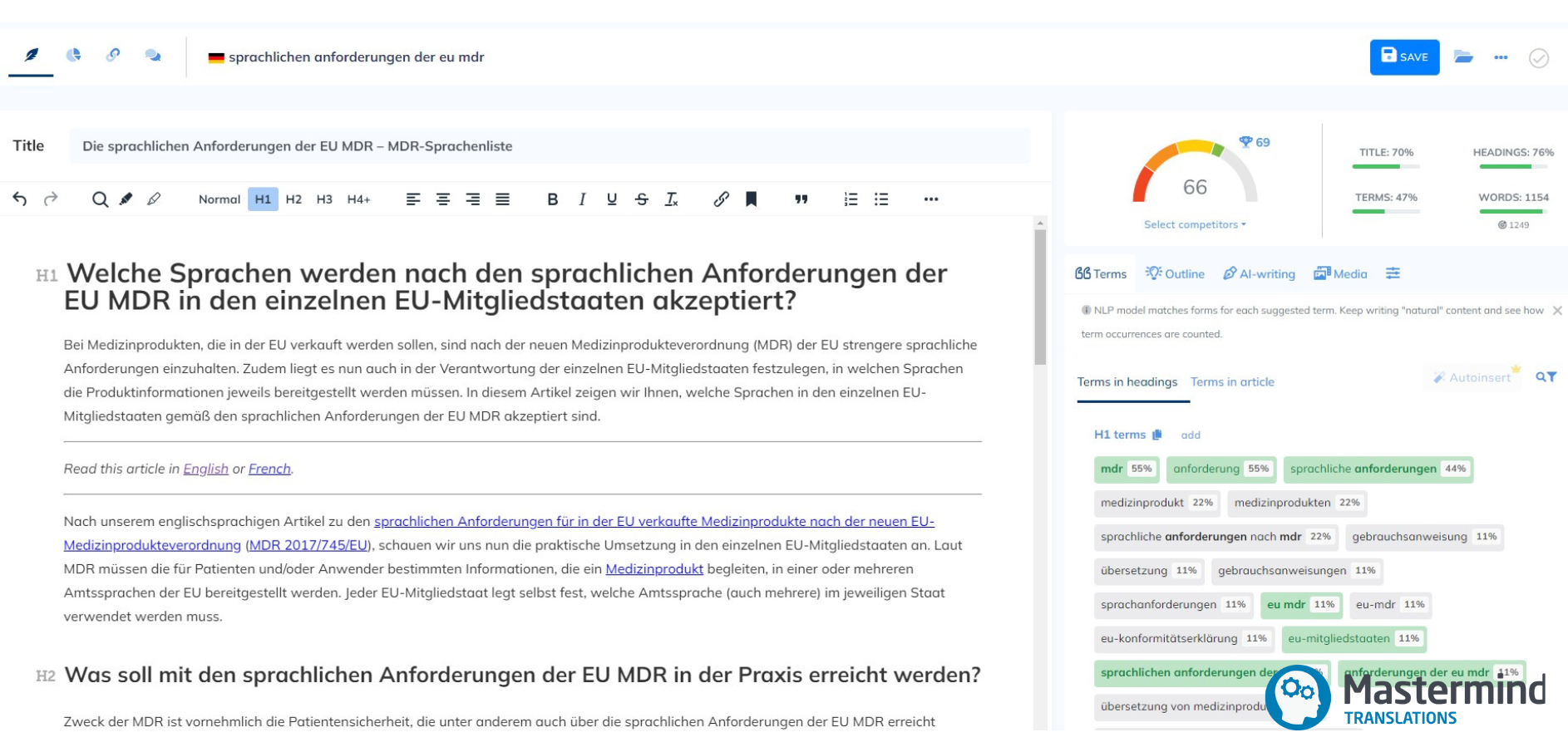
Although the ultimate objective of SEO content translation is to increase visibility on Google, you should not lose sight of the quality of your writing. While the SEO elements may be added for Google bots, the translated content is intended for human readers with very specific expectations. When your content is finally found by your target readers, it needs to provide them with the exact information they are looking for in a structured, accessible way.
Given the technical nature of our original article, we simply could not rely on machine translation tools. Highly specialist topics are best handled by expert human translators who have the necessary subject knowledge to relay the complex technical information in another language with laser-focus precision.
Step 6: Ensure the Translation is Saturated with Keywords
This was the final frontier of our localization process. Once we were satisfied with the German version of the article, we needed to make sure that its content score was sufficiently high to take it to the top of German Google. Very conveniently, NeuronWriter shows how many times each term has been used and highlights it for visibility in the editor. We tried to add several more of the suggested terms naturally, especially the basic ones, to achieve the highest score of all our competitors. It is important to strike the balance here and not to exceed the recommended limit. If the translated content is ‘over-optimised’, this can results in lower performance according to search engine algorithms. Our score of 80 was sufficient to guarantee us a spot in the top 10 on German Google.
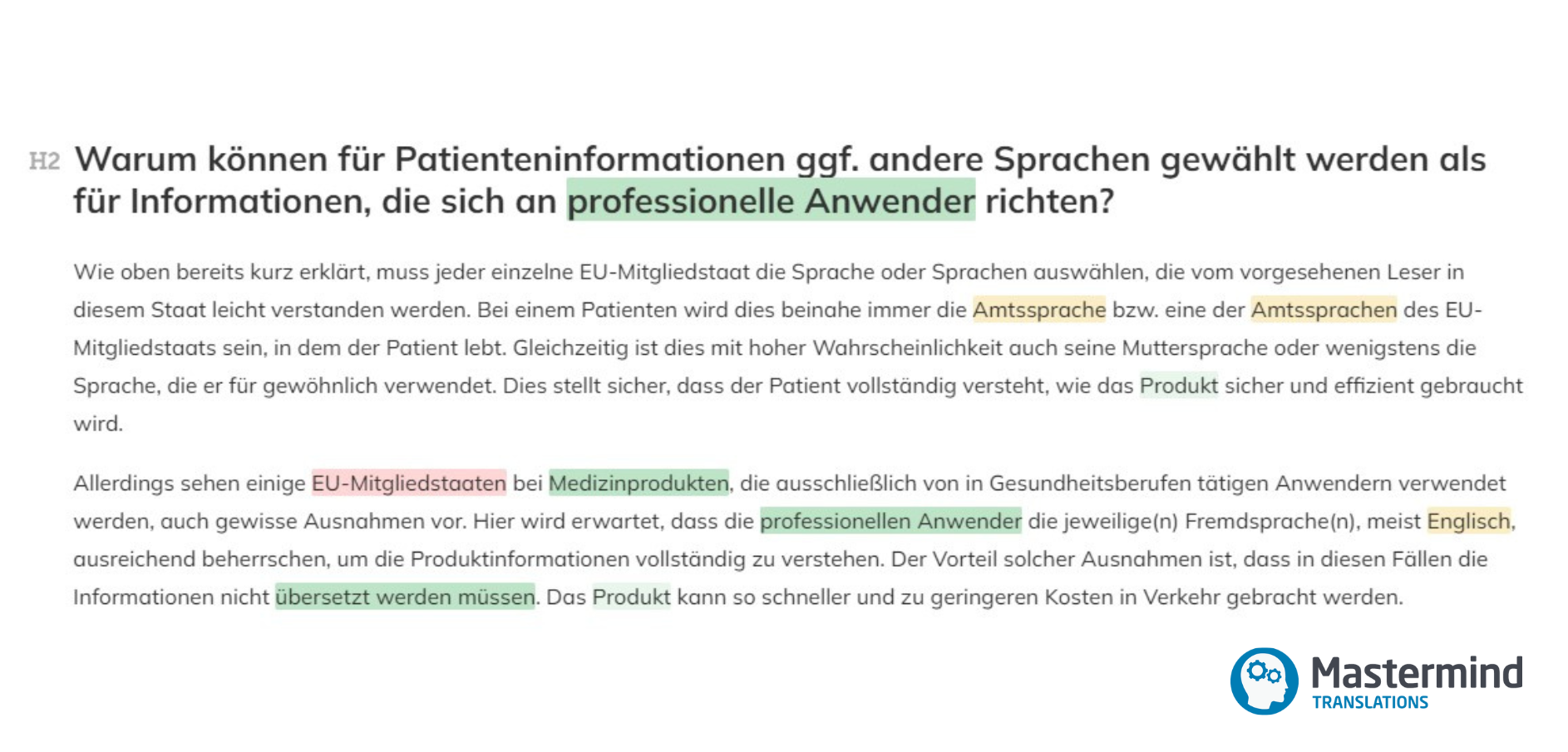
We also added a featured image to further enhance SEO by improving user engagement, increasing click-through rates in search results and on social media, and providing valuable visual content for search engine algorithms. NeuronWriter happens to have a handy image search tool that can help you choose a suitable royalty-free stock image for your newly translated page.
It was now time to show our German article to Google.
Step 7: Monitor and Adjust for Ongoing Optimization
After publishing the German article on our blog, we added its url to Google Search Console for indexing. To ensure the success of your international SEO strategy, constant monitoring and adjusting is necessary.
The time it takes for content to appear in top Google results varies, and depends on factors, such as the competitiveness of the keywords, the quality and relevance of the content, and the overall authority of the website. In some cases, well-optimized and relevant content can start ranking in a matter of days or weeks, while more competitive keywords in popular industries may take several months or longer to achieve top rankings. On balance, achieving high SEO performance is less challenging for niche areas, such as medical technologies.
Our patience was rewarded when after four months our German article reached the second spot on German Google.
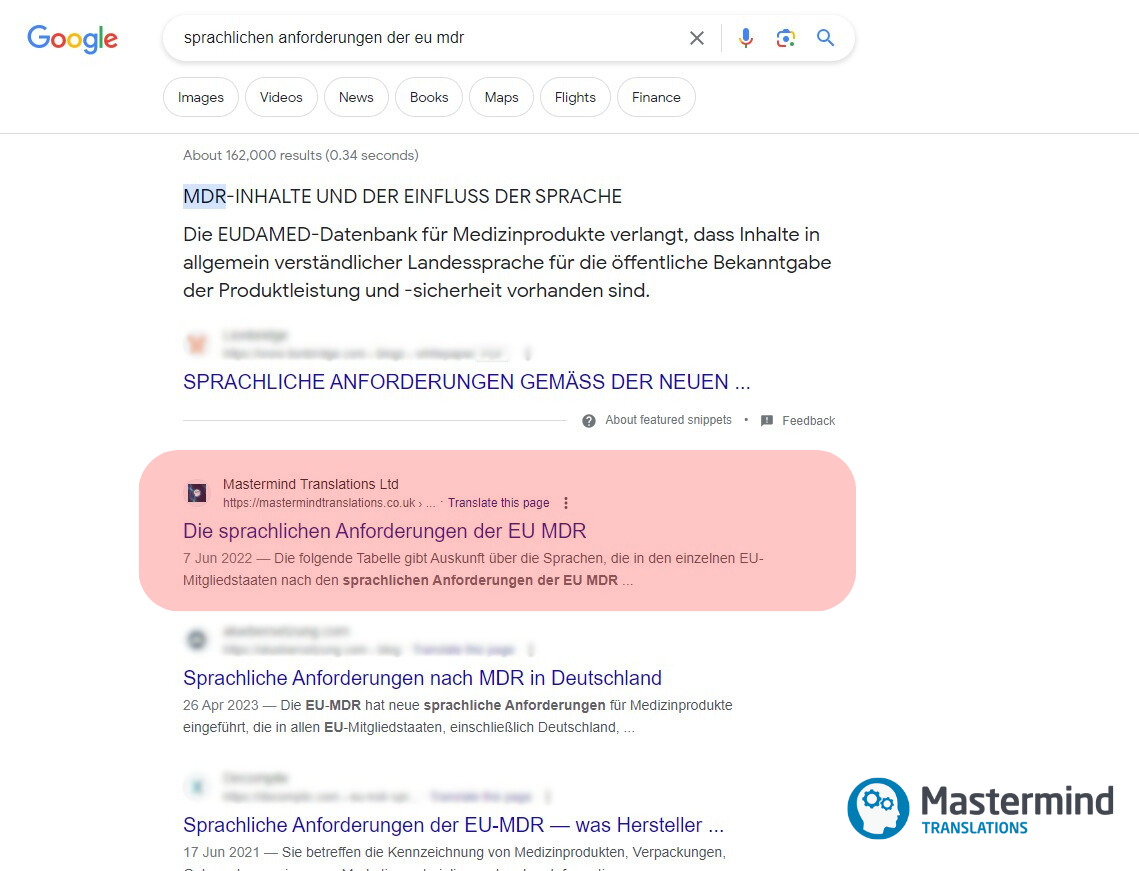
Multilingual SEO Best Practices
- Translating website content alone is not enough.
While translation is the first step, the real results are achieved when translation is coupled with localization and SEO optimization. The difference between SEO translation and traditional translation lies in the strategic integration of keywords and phrases throughout the translated content on your website. This will guarantee that the SEO work already done in the original language of your content is mirrored in other languages. - Language-specific keyword search is crucial.
A thorough keyword search for each language sets the stage for successful SEO website translation. Keyword research tools, such as Google Keyword Planner, can help identify relevant keywords and phrases that are commonly searched for by users in your chosen languages and locations. - User experience is a ranking factor.
Search engines prioritize websites that offer seamless navigation and accessibility across multiple languages. A smooth user experience can significantly enhance your website’s search engine rankings. - Human translators are indispensable for technical content.
While a machine translation service has its benefits, human translation professionals are simply more precise when it comes to niche and technical topics, such as life sciences. Based on our own experience, whether it is Generative AI (GenAI), such as ChatGPT, or Neural Machine Translation (NMT), such as Google Translate or DeepL, machine models are still unable to handle highly specialist life science content and often hallucinate. - Technical SEO is important too.
In addition to SEO translation tactics, technical SEO aspects are also essential to ensure optimal performance of multilingual websites in search results. Correctly implemented hreflang tags and a multilingual XML sitemap help search engines better understand the structure of your website’s multilingual content, making it easier for them to crawl and index all language variations. This ensures that users receive the most relevant content tailored to their language and location preferences.
For more information and a free trial, visit:



